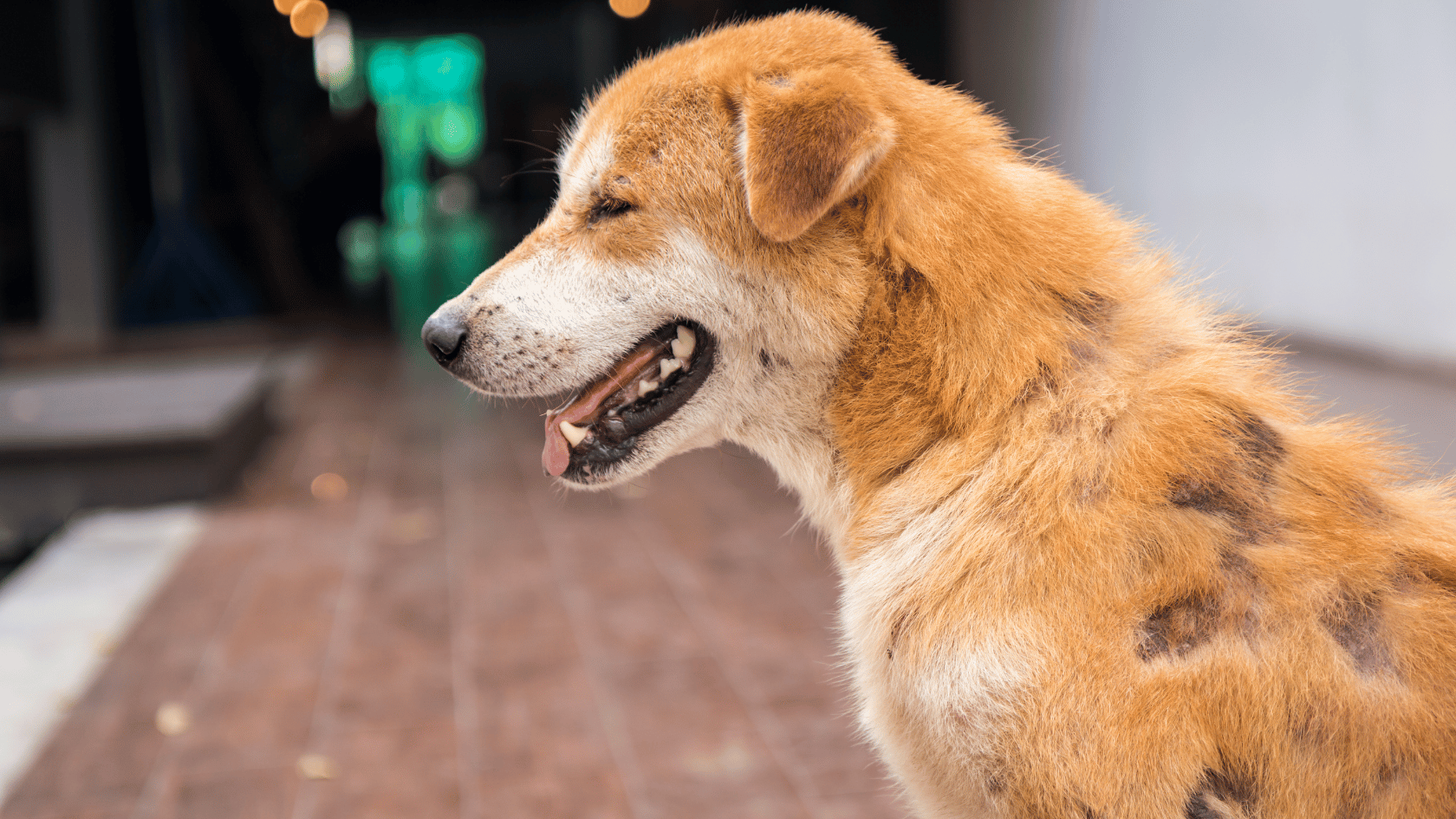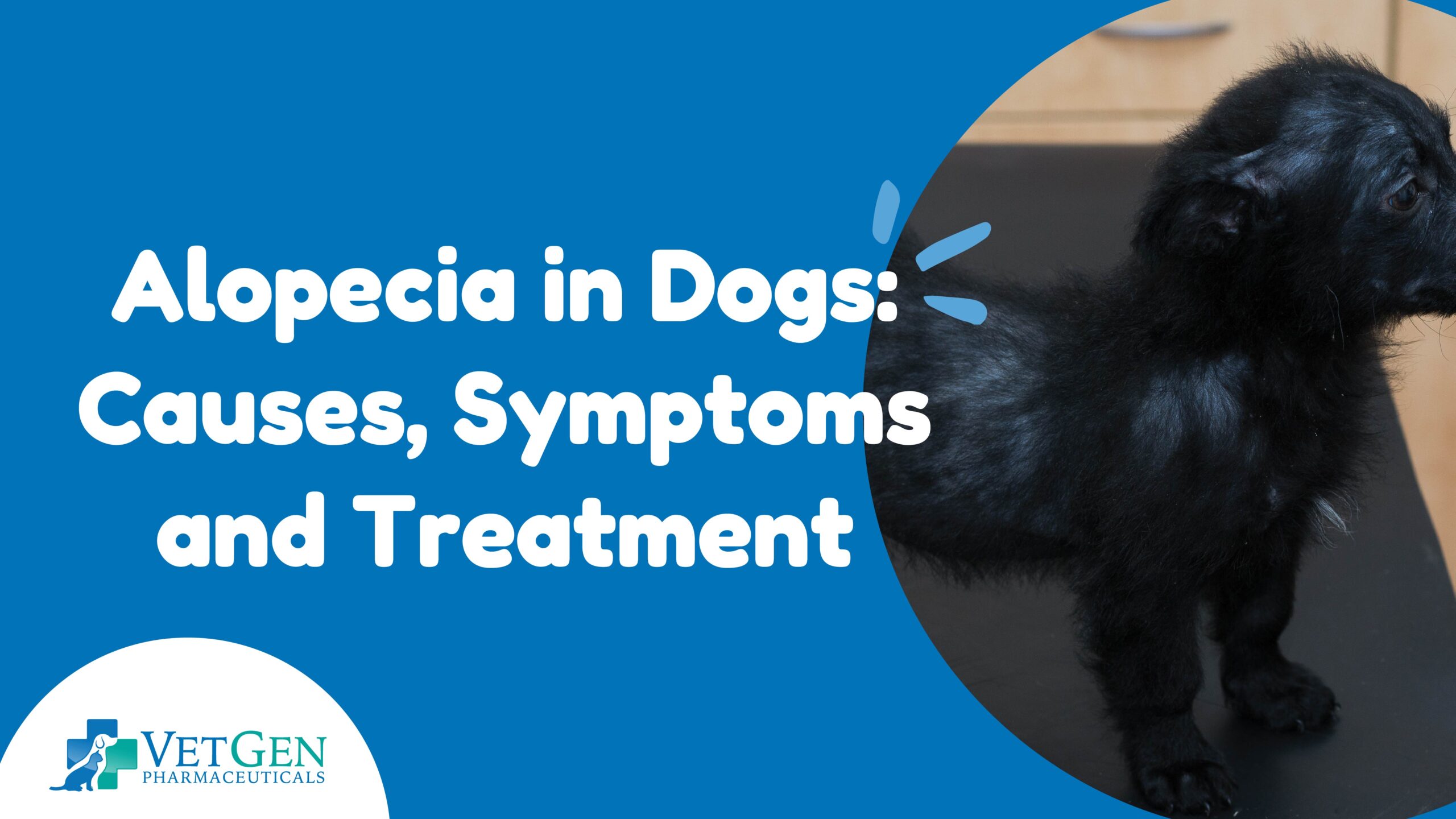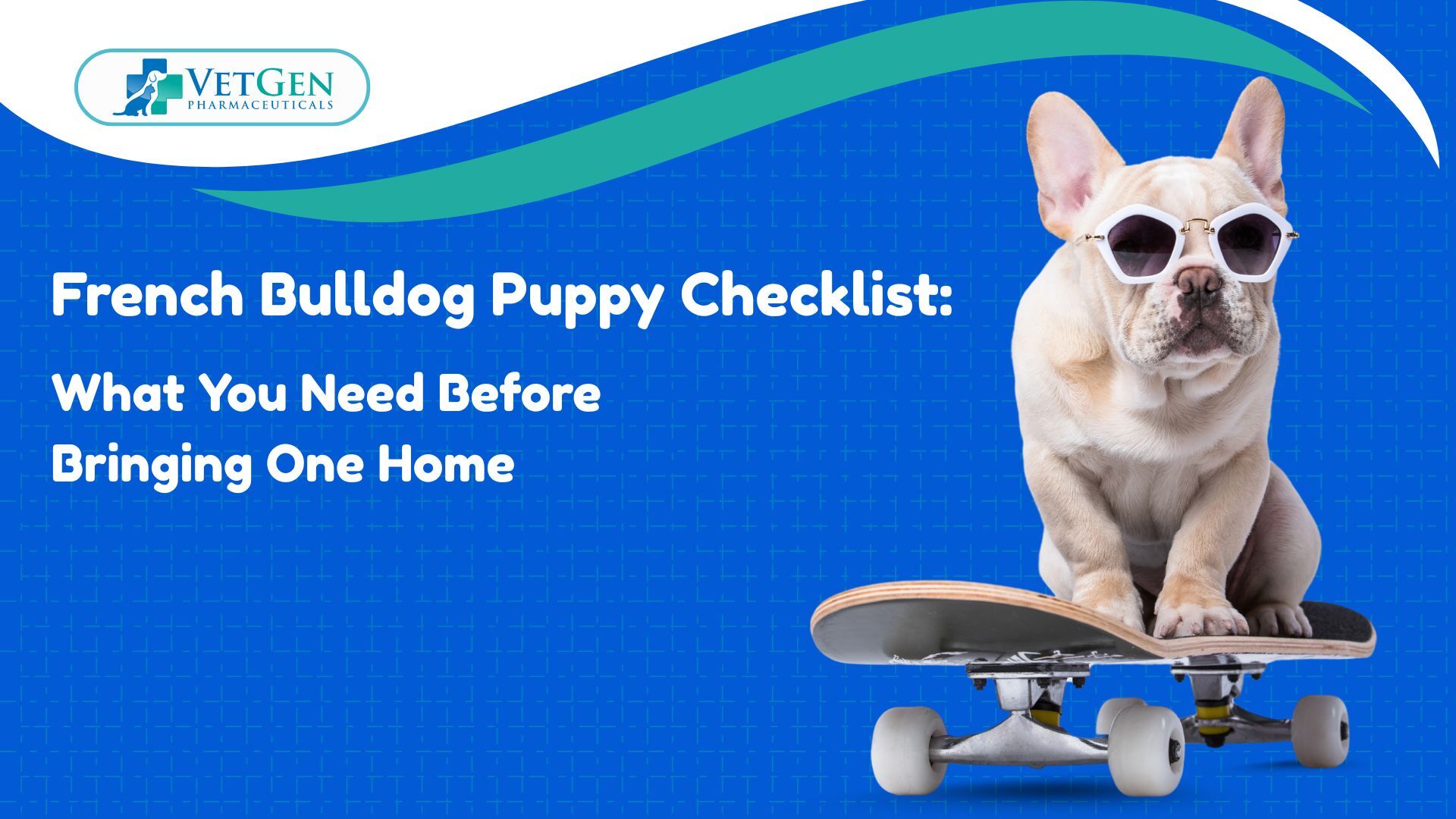What is Alopecia exactly? It is nothing but a fancy way of saying hair loss. It also includes hair thinning. Just like we humans, dogs experience it too! This condition is way more common than one might think.
Dogs of all breeds and sizes deal with alopecia at some point in their lives. So if you notice that your pup is shedding more fur than it usually does, showing some bald spots, and leaves you wondering, ‘ Why is my dog losing hair?’ Alopecia might be the culprit!
But can alopecia in dogs be cured? Just like with any other health issue, the sooner you address it, the better. To get the cure, first, we need to figure out what’s causing it.
What are the Causes of Alopecia in Dogs?
There are multiple reasons behind the underlying causes of alopecia in dogs. For effective treatment and management knowing the most common issues is be helpful. They are as follows:
Allergies in Dogs Causing Alopecia
Flea Allergy Dermatitis (FAD):
Some dogs which are allergic to flea saliva go through intense itching and hair loss. This occurs especially around the base of the tail and lower back. This is one of the most common causes of alopecia in dogs.
Food Allergies:
So, can food cause hair loss in dogs? Sensitivity or allergy to certain ingredients in the dog’s diet leads to skin inflammation, itching, and subsequent hair loss.
Hormonal Imbalances in Dogs
Hypothyroidism:
In this endocrine disorder in dogs, the thyroid gland produces insufficient thyroid hormone. This hormonal imbalance causes alopecia in dogs. The symptoms include to hair loss, dull coats, and other skin issues.
Cushing’s Disease (Hyperadrenocorticism):
Hyperadrenocorticism is an overproduction of cortisol due to adrenal gland dysfunction. Hair loss, particularly on the trunk, is a common symptom of this disorder.
Parasitic Infestations on Dogs
Mange:
Mange is a condition which is caused by mites such as Sarcoptes scabiei (sarcoptic mange) or Demodex canis (demodectic mange). Certain mites tend to burrow into the skin. This leads to severe itching, hair loss, and skin lesions.
Fleas and Ticks:
Heavy infestations of fleas or ticks sometimes lead to irritation, scratching, and hair loss in affected areas.
Fungal Infections Causing Alopecia in Dogs
Ringworm (Dermatophytosis)
Dermatophytosis is a fungal infection which affects the skin, hair, and sometimes nails. It causes circular patches of hair loss with inflammation and scaling.
Autoimmune Diseases in Dogs
Autoimmune skin diseases, like ‘Pemphigus foliaceus’ and ‘Discoid lupus erythematosus,’ often causes hair loss and skin lesions by attacking hair follicles with the immune system.
Stress-Related Alopecia
Stress related hair-loss is common in dogs. Emotional stress or environmental changes also plays a big role in hair loss among dogs. This type of alopecia is often self-induced through excessive licking or chewing due to anxiety or boredom.
Genetic Factors Causing Alopecia in Dogs
Certain dog breeds are more prone to hereditary forms of alopecia. For example, breeds like Dachshunds, Italian Greyhounds, and Chinese Cresteds are known to have genetic predispositions to hair loss conditions.
Nutritional Deficiencies
Many wonder what vitamin deficiency causes hair loss in dogs? To answer, inadequate levels of certain nutrients, such as protein, essential fatty acids, vitamins (e.g., vitamin A and B vitamins), and minerals (e.g., zinc), affects skin and coat health, ultimately leading to alopecia in Dogs.
Trauma or Injury
Physical trauma, such as friction from harnesses or collars, burns, or injuries, causes localized hair loss in dogs in affected areas.

Symptoms of Alopecia in Dogs
There are various symptoms behind alopecia in dogs. A few of them are:
Hair Loss Patterns:
Patchy Hair Loss in Dogs:
Alopecia often presents as irregular or patchy areas of hair loss on the dog’s coat. These patches differ in size and shape.
Symmetrical Hair Loss in dogs:
But in some cases, alopecia may occur symmetrically on both sides of the body or specific body parts, such as the flanks, thighs, or ears.
Generalized Thinning of Coat in dogs:
In more severe cases, dogs may experience overall coat thinning, making the skin more visible.
Dogs with Skin Changes:
Redness and Inflammation:
The skin in affected areas may appear red, inflamed, or irritated. It might also be due to underlying skin conditions or secondary infections.
Itching or Scratching:
Dogs with alopecia often experience itching or discomfort in the affected areas, which can lead to excessive scratching, licking, or chewing.
Presence of Scales or Scabs:
Depending on underlying causes, the skin may develop scales, scabs, or crusts. These might also indicate skin infections or inflammatory conditions.
Behavioral Signs:
Excessive Grooming or Licking:
Dogs may excessively groom or lick the affected areas to reduce itching or discomfort. Which further increases hair loss and skin irritation.
Discomfort or Pain:
Alopecia accompanied by inflammation or skin lesions, causes discomfort or pain in affected dogs. They may also show signs of agitation, restlessness, or avoid getting touched in those areas.
Behavioral Changes:
In some cases, dogs may exhibit changes in behavior, such as increased anxiety, irritability, or depression, especially if alopecia is causing significant discomfort or affecting their quality of life.
Secondary Symptoms of Alopecia in Dogs
Skin Infections:
Hair loss sometimes makes the skin more prone to bacterial or fungal infections, which results to symptoms such as boils, abscesses, or foul odor.
Changes in Skin Texture:
Over time, the skin in areas of alopecia may become thickened, rough, or hyperpigmented, particularly in chronic cases.
Systemic Signs:
Depending on the underlying cause of alopecia, dogs may exhibit systemic signs such as weight loss, lethargy, decreased appetite, or other symptoms related to concurrent medical conditions.
How To Treat Hair Loss In Dogs
Depending on underlying causes, your vet may prescribe antibiotics for bacterial infections, antifungal medicines for fungal infections, or corticosteroids to reduce inflammation and itching.
Medicated shampoos, sprays, or ointments may be recommended to address skin infections, soothe irritated skin, or promote hair regrowth. Follow your vet’s instructions for proper application.
If parasites like fleas, ticks, or mites are causing hair loss, your vet will prescribe appropriate parasiticides or recommend preventive measures to eliminate infestations and prevent recurrence.
Ensure your pup is chowing down on a well-rounded diet packed with good stuff like protein, omega-3 fatty acids, vitamins, and minerals. If your vet thinks it’s necessary, they might suggest adding some dietary supplements or switching to a special diet to boost your dog’s skin and coat.
To Conclude…
To identify the specific cause, a thorough veterinary evaluation, including physical examination, diagnostic tests, and sometimes skin biopsies, may be necessary.
That means taking your dog to the vet when you notice any changes in its coat. Early detection helps determine what’s causing the hair loss and get your furry friend back to looking its best.
About VetGen Pharmaceuticals:
To ensure good health, explore the comprehensive resources at VetGen Pharmaceuticals. Through the insights and guidance tailored to your dog’s well-being, you prevent the development of degenerative conditions in dogs or tend to existing symptoms. Because when dogs thrive, we all do!
Frequently Asked Questions
What is the home remedy for alopecia in dogs?
Home remedies for alopecia in dogs include:
- Providing a diet rich in essential nutrients.
- Regular grooming using hypoallergenic shampoos.
- Aloe vera gel or coconut oil is applied topically to soothe skin irritation.
Maintaining a stress-free environment and implementing effective flea control measures are also important.
At what age do dogs get alopecia?
Dogs develop alopecia at any age, depending on the underlying cause. Some forms of alopecia, such as those related to genetic factors or hormonal imbalances, may manifest early in life, even in puppies. Other causes, such as allergies, parasites, or environmental factors, can lead to alopecia at any age, including adulthood or senior years. Some breeds may be more susceptible to certain types of alopecia, influencing its onset.
What are the supplements for alopecia in dogs?
Supplements like omega-3 fatty acids, biotin, zinc, vitamin E, probiotics, and multivitamins support skin and coat health in dogs with alopecia.






